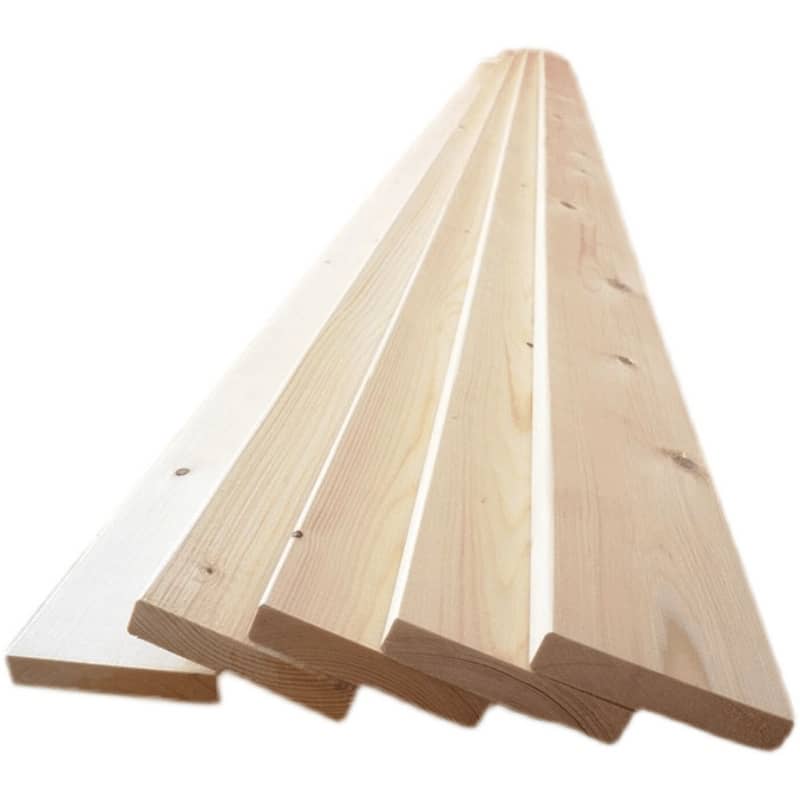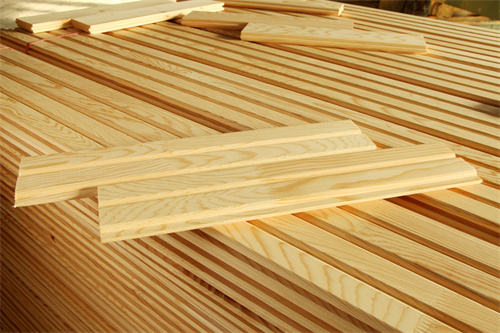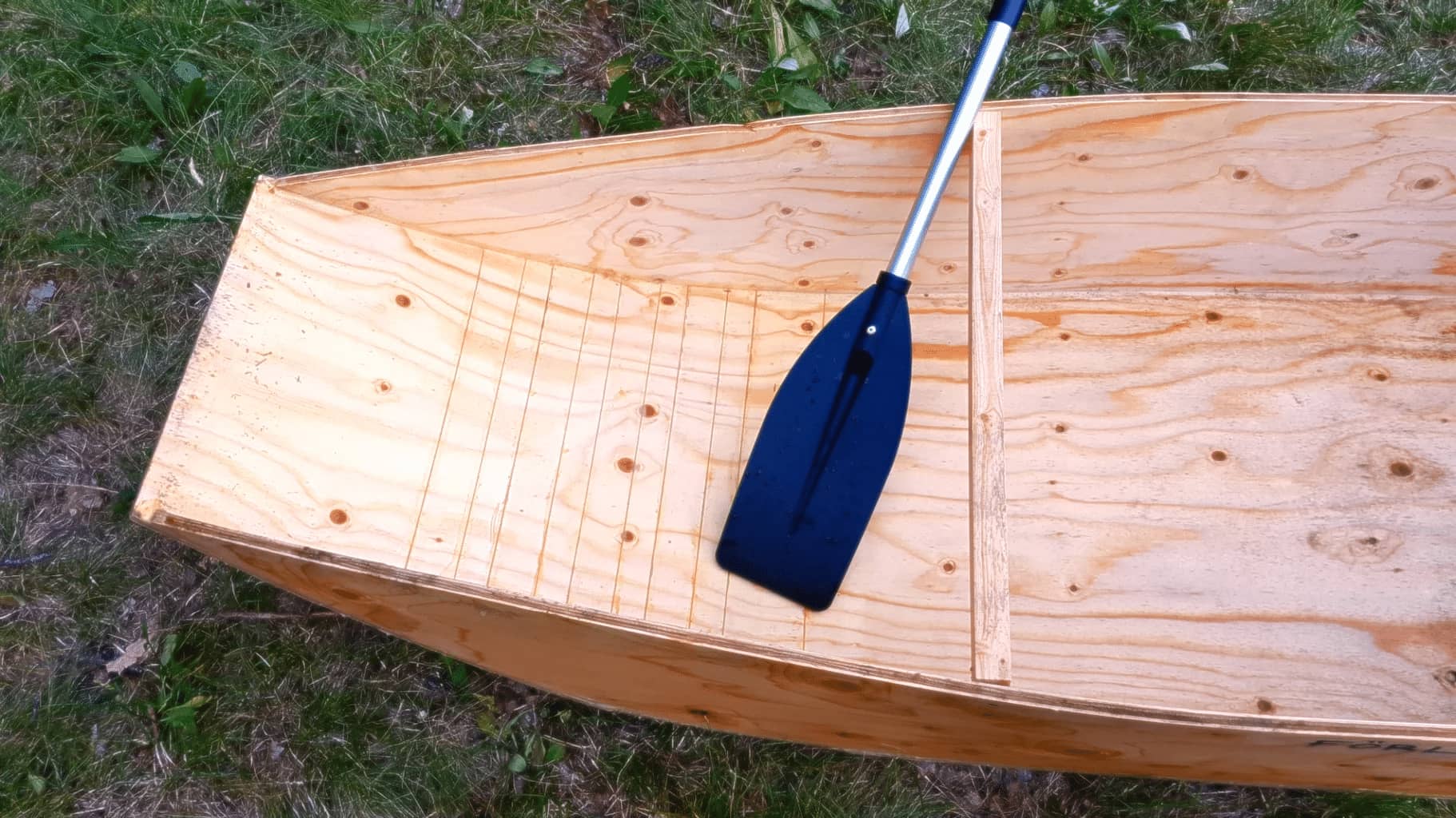Le monde de la vente de meubles se nourrit de confort, de style et de la promesse d'une bonne nuit de sommeil. Si les matelas et les têtes de lit occupent souvent le devant de la scène, les détaillants avisés comprennent le rôle essentiel d'un cadre de lit de qualité - et de ses lattes, souvent négligées - pour obtenir une véritable satisfaction du client. Ce guide complet se penche sur le monde complexe de la literie. lit en gros LamellesLe programme d'approvisionnement en eau et d'assainissement de l'Union européenne (UEA) permet aux détaillants de disposer des connaissances et des ressources nécessaires pour prendre des décisions éclairées en matière d'approvisionnement, afin d'améliorer leurs résultats tout en dépassant les attentes de leurs clients.

L'importance des barreaux de lit : Au-delà du soutien de base
Avant d'aborder les complexités de l'approvisionnement en gros, reconnaissons le rôle essentiel que jouent les lattes de lit dans un cadre de lit bien conçu et leur impact sur l'expérience globale du client :
- Soutien et longévité du matelas : Les lattes de lit constituent une base essentielle, répartissant uniformément le poids du matelas sur le cadre. Cela permet d'éviter l'affaissement, un problème courant qui peut entraîner un inconfort et une réduction de la durée de vie du matelas. En choisissant des lattes de haute qualité, les détaillants peuvent garantir à leurs clients une plus grande longévité du matelas et un confort durable.
- Respirabilité et hygiène : Les espaces entre les lattes ne sont pas seulement esthétiques ; ils facilitent la circulation de l'air, favorisant une ventilation essentielle qui empêche l'accumulation d'humidité, de moisissures et de mildiou. Cet aspect est particulièrement important pour les clients résidant dans des climats humides ou souffrant d'allergies, car il a un impact direct sur l'hygiène du sommeil et la longévité du matelas lui-même.
- Personnalisation du confort et du soutien : La flexion subtile de la plupart des lattes de lit confère un léger ressort au lit, ce qui améliore le confort et favorise un sommeil réparateur. Les détaillants peuvent répondre aux préférences individuelles en proposant des lattes dont la fermeté est réglable, ce qui permet aux clients d'affiner leur expérience de sommeil et d'obtenir un soutien optimal.
- Durabilité et intégrité du cadre de lit : Des lattes de lit de haute qualité font partie intégrante de l'intégrité structurelle d'un cadre de lit, garantissant sa longévité et sa capacité à résister à des années d'utilisation. Le choix de matériaux durables, en particulier pour les matelas plus lourds ou les dormeurs actifs, devient un argument de vente clé, minimisant les retours potentiels et améliorant la satisfaction du client avec un produit robuste et durable.
Naviguer sur le marché de gros des lattes de lit : Principales considérations pour les détaillants
L'approvisionnement en lattes de lit en gros nécessite un examen minutieux de divers facteurs qui influencent la qualité des produits, les stratégies de prix et, en fin de compte, votre rentabilité. Examinons les éléments clés qui guideront votre processus de décision :
- L'importance des matériaux : Trouver le juste équilibre entre la qualité, le coût et les attentes des clients
- Bois massif :
- Pour : Le bois massif, réputé pour sa beauté naturelle, sa durabilité et son attrait intemporel, reste un choix populaire pour les cadres de lit haut de gamme. Les détaillants qui s'adressent à des clients privilégiant la qualité et les matériaux naturels s'orientent souvent vers des options en bois massif comme le pin, le hêtre et le bouleau, chacun étant apprécié pour ses caractéristiques et ses veinures uniques.
- Cons : Le bois massif représente généralement l'option la plus onéreuse en raison des coûts plus élevés liés à l'approvisionnement et au traitement du matériau. Les détaillants doivent analyser attentivement leur marché cible, leurs stratégies de prix et les marges bénéficiaires souhaitées lorsqu'ils optent pour des lattes en bois massif, afin de garantir un modèle commercial durable.
- Contreplaqué :
- Pour : Le contreplaqué est une alternative convaincante au bois massif, offrant un équilibre entre prix et résistance sans compromis sur la qualité. Constituées de couches de placage de bois collées les unes aux autres, les lames de contreplaqué constituent une solution économique pour les détaillants qui recherchent la durabilité sans avoir à payer le prix fort associé au bois massif.
- Cons : Bien que structurellement solide, le contreplaqué peut manquer de l'attrait visuel du bois massif, en particulier pour les clients qui recherchent une esthétique naturelle et haut de gamme. Les détaillants peuvent remédier à ce problème en explorant les options de finition ou les techniques de bandes de chant pour améliorer l'aspect des lattes de contreplaqué.
- Métal :
- Pour : Les lattes métalliques, en particulier celles en acier, sont synonymes de durabilité et de solidité exceptionnelles. On les trouve généralement dans les cadres de lit plus lourds ou les lits à plate-forme conçus pour supporter un poids important, ce qui les rend idéales pour les clients qui recherchent des meubles durables et pour les détaillants qui ciblent ce segment de marché.
- Cons : Les lamelles métalliques représentent souvent l'option la plus coûteuse en raison des matériaux et des processus de fabrication impliqués. En outre, leur esthétique plus froide et plus industrielle peut ne pas correspondre à tous les styles de chambres à coucher ou aux préférences des clients. Les détaillants doivent étudier attentivement leur marché cible et l'esthétique générale de leur offre de cadres de lit avant de s'engager sur la voie des lattes métalliques.
- Dimensions et spécifications : Obtenir la bonne adaptation à vos cadres et aux besoins de vos clients
- Longueur et largeur : La précision des dimensions des lattes est cruciale. Les lattes de lit doivent s'adapter parfaitement au cadre du lit pour éviter les mouvements, le bruit et les dommages potentiels au matelas. Les détaillants doivent proposer une gamme complète de dimensions de lattes pour s'adapter aux différentes tailles de lit (Twin, Full, Queen, King, California King) et aux différents modèles de cadre, afin de garantir un ajustement parfait pour chaque client et de minimiser les éventuels retours ou réclamations.
- Épaisseur : L'épaisseur des lattes est directement liée au soutien et à la fermeté. Les lattes plus épaisses offrent généralement plus de soutien et une sensation plus ferme, ce qui les rend adaptées aux matelas plus lourds ou aux personnes qui préfèrent une surface de sommeil moins souple. Les détaillants doivent tenir compte de la capacité de poids de leurs cadres de lit et des préférences de leur marché cible lorsqu'ils choisissent l'épaisseur des lattes, en offrant une variété d'options pour répondre à des besoins divers.
- Espacement : L'espacement entre les lattes a une incidence sur le soutien et la respirabilité. Un espacement plus étroit procure une sensation plus ferme et un soutien accru, mais peut limiter la circulation de l'air, tandis qu'un espacement plus large améliore la ventilation, mais peut conduire à une surface de sommeil moins favorable. Les détaillants doivent tenir compte du type de matelas prévu, du niveau de fermeté souhaité et de l'importance de la respirabilité pour leur marché cible lorsqu'ils déterminent l'espacement optimal entre les lattes.
- Quantité et prix : Trouver le juste milieu pour votre modèle d'entreprise et votre volume de ventes
- Quantités minimales de commande (QMC) : Les fournisseurs en gros mettent souvent en place des quantités minimales de commande (QMV) afin de rationaliser la production et de gérer les coûts. Les détaillants doivent évaluer soigneusement leur volume de ventes, leur capacité de stockage et leur trésorerie afin de déterminer les quantités minimales de commande appropriées qui permettent d'équilibrer les besoins en stocks et les considérations financières.
- Remises en vrac : Tirer parti des remises en gros est une stratégie clé pour maximiser la rentabilité. Les fournisseurs en gros proposent souvent des prix réduits pour les commandes importantes, ce qui permet aux détaillants de réduire le coût des marchandises vendues et d'augmenter leurs marges bénéficiaires. Négocier des remises en gros favorables, en particulier pour les commandes de gros volumes ou les partenariats à long terme, peut avoir un impact significatif sur le résultat net d'un détaillant.
- Frais d'expédition : Les frais d'expédition peuvent représenter une part importante des dépenses globales et doivent être pris en compte dans les stratégies de tarification. Ces frais peuvent fluctuer en fonction de facteurs tels que la distance, le volume de la commande, la méthode d'expédition et le prix du carburant. Les détaillants devraient explorer des stratégies visant à minimiser les frais d'expédition, telles que la négociation de tarifs réduits avec les transporteurs, le regroupement des expéditions ou le partenariat avec des fournisseurs locaux.
- Touches de finition : Améliorer la durabilité, l'esthétique et l'attrait pour le client
- Inachevée : Les lattes non finies constituent l'option la plus économique, car elles offrent aux détaillants la possibilité d'appliquer leurs propres finitions ou teintures pour s'adapter à des cadres de lit spécifiques ou répondre aux préférences individuelles des clients. Toutefois, cette approche nécessite une main-d'œuvre, des ressources et une expertise supplémentaires en matière de techniques de finition.
- Préfini : Les lattes préfinies rationalisent le processus de production et offrent un aspect cohérent et professionnel. Les fournisseurs proposent souvent une gamme de finitions et de couleurs adaptées aux différents styles de cadres de lit et aux préférences des clients, ce qui évite aux détaillants d'avoir à investir dans du matériel de finition ou de l'expertise.
- Traitements : Les traitements à valeur ajoutée, tels que la résistance à l'eau, la répulsion des insectes ou l'ignifugation, peuvent considérablement améliorer l'attrait et la durabilité des lattes de lit. Ces traitements ne protègent pas seulement les lattes de l'usure, mais offrent également une tranquillité d'esprit aux clients soucieux de l'hygiène, de la sécurité et de la longévité de leur investissement.
Stratégies d'approvisionnement : Trouver le partenaire idéal pour la vente en gros de lattes de lit pour votre commerce de détail
- Marchés en ligne : Les places de marché en ligne telles qu'Alibaba et Global Sources mettent les détaillants en contact avec un vaste réseau de fournisseurs internationaux, ce qui leur permet d'accéder à des prix compétitifs et à une plus grande sélection de produits. Toutefois, il est essentiel de faire preuve d'une grande diligence lorsqu'on s'approvisionne sur des places de marché en ligne. Les détaillants doivent donner la priorité à la vérification des fournisseurs, demander des échantillons et examiner attentivement les commentaires des clients afin d'atténuer les risques liés à la qualité et aux pratiques d'approvisionnement éthiques.
- Salons professionnels : La participation à des salons professionnels offre des possibilités inestimables de rencontrer des fournisseurs en personne, d'examiner des échantillons, de négocier des contrats et de se tenir au courant des dernières tendances et innovations. La recherche et la participation à des événements pertinents du secteur de l'ameublement et de la literie permettent aux détaillants de nouer des relations, de comparer les offres et de prendre des décisions éclairées en matière d'approvisionnement.
- Sites web des fournisseurs directs : De nombreux fabricants disposent de leur propre site web, offrant aux détaillants un accès direct aux catalogues de produits, aux informations sur les prix et à un aperçu de leurs processus de fabrication et de leurs normes de qualité. L'exploration des sites web des fournisseurs peut permettre de mieux comprendre leurs capacités et de faciliter la communication directe.
- Agents d'approvisionnement : Pour les détaillants qui débutent dans le sourcing international, qui manquent de temps ou qui cherchent à rationaliser le processus d'approvisionnement, faire appel à un agent de sourcing réputé peut s'avérer une stratégie précieuse. Les agents d'approvisionnement possèdent l'expertise nécessaire pour naviguer sur les marchés internationaux, négocier les prix, gérer la logistique et assurer le contrôle de la qualité, ce qui permet aux détaillants de se concentrer sur leurs activités principales.
Contrôle de la qualité : Garantir la satisfaction des clients et protéger la réputation de votre marque
- Échantillons de commandes : Il est primordial de commander et d'inspecter minutieusement des échantillons avant d'engager des commandes importantes. Cette étape cruciale permet aux détaillants d'évaluer la qualité des matériaux, la précision des dimensions, la cohérence de la finition et la construction globale des lattes de lit. L'identification précoce des problèmes potentiels permet d'éviter des erreurs coûteuses et de garantir le respect des normes de qualité.
- Audits d'usine : Pour les commandes plus importantes, les partenariats en cours ou l'approvisionnement dans des régions où les réglementations en matière de travail et d'environnement varient, il est essentiel d'effectuer (ou de faire effectuer) des audits d'usine. Les audits d'usine assurent la transparence des pratiques de fabrication, garantissant des conditions de travail éthiques, le respect des normes de sécurité et des pratiques environnementales responsables.
- Communication avec les fournisseurs : La mise en place de canaux de communication clairs, cohérents et transparents avec les fournisseurs est essentielle à la réussite du partenariat. Les détaillants doivent définir clairement leurs attentes en matière de qualité, les taux de défauts acceptables, les exigences en matière d'emballage, les directives d'étiquetage et tout protocole d'essai spécifique afin de minimiser les malentendus et de garantir une compréhension commune des normes de qualité.
Gestion des stocks : Équilibrer l'offre et la demande pour optimiser la trésorerie et l'espace de stockage
- Prévision de la demande : Une prévision précise de la demande est essentielle pour optimiser les niveaux de stock et éviter les ruptures de stock coûteuses ou les situations de surstockage. Les détaillants doivent exploiter les données historiques sur les ventes, analyser les tendances du marché, tenir compte des fluctuations saisonnières et des calendriers promotionnels pour anticiper la demande et prendre des décisions d'achat éclairées.
- Délais d'exécution : Il est essentiel de comprendre et de prendre en compte les délais d'approvisionnement des fournisseurs, les durées d'expédition et les éventuels retards douaniers pour maintenir des niveaux de stocks optimaux. Les détaillants doivent intégrer ces délais dans leurs cycles de réapprovisionnement des stocks afin de garantir des livraisons en temps voulu et d'éviter les ruptures de stock qui peuvent entraîner des pertes de chiffre d'affaires et la frustration des clients.
- Solutions de stockage : Un stockage adéquat est essentiel pour préserver la qualité des lattes de lit et minimiser les pertes dues aux dommages, à l'humidité ou aux parasites. Les détaillants doivent investir dans des solutions de stockage adéquates, telles que des entrepôts climatisés ou des zones de stockage dédiées, afin de protéger leurs stocks et de garantir la qualité à long terme de leurs produits.
Exemple de paliers de prix de gros pour les lattes de lit
| Quantité commandée | Lamelles en bois massif (par lamelle) | Lamelles en contreplaqué (par lamelle) | Lamelles métalliques (par lamelle) |
|---|---|---|---|
| 1-100 | $8 – $12 | $4 – $6 | $10 – $15 |
| 101-500 | $7 – $10 | $3.50 – $5 | $9 – $13 |
| 501-1000 | $6 – $9 | $3 – $4.50 | $8 – $12 |
| 1000+ | $5 – $8 | $2.50 – $4 | $7 – $11 |
Remarque : Les prix de gros des lattes de lit peuvent varier considérablement en fonction de facteurs tels que le type de matériau, les dimensions, les options de finition, l'emplacement du fournisseur, la demande du marché et les accords négociés. Il est essentiel de demander des devis à plusieurs fournisseurs pour comparer les prix et obtenir les tarifs les plus compétitifs.
Aller au-delà de l'essentiel : Les services à valeur ajoutée et les tendances qui façonnent le marché de gros des lattes de lit
- Fabrication sur mesure : En s'associant à des fournisseurs offrant des capacités de fabrication sur mesure, les détaillants peuvent différencier leurs offres de produits et répondre aux besoins spécifiques de leurs clients. Il peut s'agir d'adapter des dimensions de cadre de lit non standard, des éléments de design uniques ou des préférences spécifiques en matière de matériaux.
- Livraison directe : La livraison directe offre un modèle d'exécution rationalisé, permettant aux détaillants d'offrir une plus grande variété d'options de lattes de lit sans les frais généraux de gestion des stocks. Ce modèle peut être particulièrement avantageux pour les détaillants disposant d'un espace de stockage limité, pour ceux qui testent de nouveaux produits ou des marchés de niche, ou pour ceux qui cherchent à minimiser l'investissement initial dans les stocks.
- Approvisionnement durable : La demande des consommateurs pour des produits respectueux de l'environnement ne cessant d'augmenter, il devient de plus en plus important de s'approvisionner en lattes de lit fabriquées à partir de bois récolté de manière durable ou de matériaux recyclés. Les détaillants devraient privilégier les fournisseurs qui s'engagent à respecter des pratiques forestières responsables et explorer les options de matériaux et de procédés de fabrication écologiques.
Conclusion : Construire les bases de la réussite sur le marché concurrentiel de la vente au détail de meubles
Pour s'approvisionner efficacement en sommiers de gros, il faut bien comprendre les facteurs qui influencent la qualité des produits, les prix et la satisfaction des clients. En examinant attentivement les options de matériaux, les dimensions, les stratégies de prix, les mesures de contrôle de la qualité, les techniques de gestion des stocks et les tendances émergentes, les détaillants peuvent naviguer en toute confiance sur le marché, établir de solides relations avec les fournisseurs et fournir à leurs clients des lattes de lit de haute qualité qui améliorent le confort, la durabilité et l'expérience globale du sommeil. N'oubliez pas qu'une latte de lit bien choisie est un investissement dans la satisfaction du client, la réputation de la marque et le succès à long terme de votre commerce de détail.




